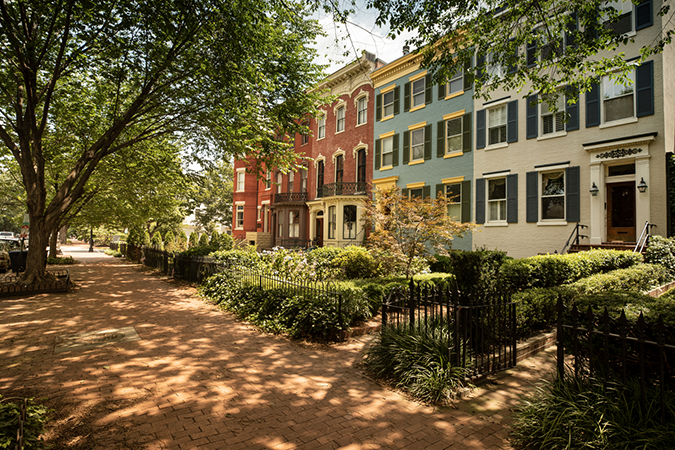
25 Apr How the Rise in Remote Work Impacts Community Marketing
The pandemic has changed the way people and employers view and structure working environments and arrangements. Over the last two-plus years, companies have reimagined their remote work policies and developed other hybrid options – even creating fully remote positions where employees are hired and work from different cities across the country.
These remote work trends support the massive shift we’ve seen in how people balance their careers and quality of life, with many prioritizing the latter at a growing rate.
This shift was also present in North Star’s Why They Moved study, which was conducted in 2021 well after the initial waves of the pandemic. The study found that only 12% of participants who recently moved considered finding the right job, regardless of place, to be their primary goal in relocating. In comparison, 42% said that their priority was finding a balance between the right job and the right place to live, while 46% thought finding the right place to live was of greatest importance.
That means 88% of respondents prioritized quality of place in some capacity.
While the jury is still out on exactly what level of presence remote work will have permanently, there’s no question that this trend – along with individuals’ focus on quality of place – is here to stay.
What Does this Mean for Community Marketers?
With the focus of quality of place growing, marketers must examine and adapt how they are promoting their communities. Local job growth and career opportunities will always have an important place in the conversation, but it’s clear that potential relocators and current residents are placing more emphasis elsewhere.
Here are a few ways in which you can respond to these trends to set your community up for more success and sustainability.
Spotlight Remote Work Amenities in Your Community
As investment in priorities such as smart technologies, connectivity and environmental initiatives grow, more communities are positioned to market how they are suited for the modern-day remote worker. Whether it’s through remote work spaces such as gourmet coffee shops, amenities such as high-speed internet access, or outdoor recreational parks or bike lanes that promote a balanced lifestyle, find the assets in your community that are attractive to remote workers and create content about them.
Just one example is in Quincy, a small town nestled alongside the Mississippi River in west-central Illinois. Without knowing much, one might assume Quincy has limited connectivity, especially for an employee working remotely full time.
To combat this perception, Quincy positions themselves as a remote-ready city equipped with gigabit fiber optic internet. Plus, they have beautiful natural resources, trails and parks that make for a great work setting and alternative to the home office.
Ensure Your Local Employers Promote Their Remote or Hybrid Working Arrangements
As companies in your area transition to remote or hybrid work environments, collaborate with them to ensure they are promoting these changes on their marketing channels and with prospective employees.
Additionally, you may find opportunity to create joint content with employers that helps tell a comprehensive story about your community’s focus on remote work. That might be through an educational video about your city’s job market, employees and remote lifestyle, or an earned media story about how you are collectively adapting to this trend.
Incentivize Remote Working
As more workers look to leave major cities for a quieter or family friendly lifestyle, some small-to-medium-sized cities are paying individuals to move to their communities and bring their jobs with them (or, take a position with a local employer).
Several financial incentive programs have been implemented over the past couple of years, including city-backed initiatives or collaboration with local employers to offer higher signing bonuses or salaries.
Further, some communities incentivize prospective residents by leveraging what makes their place unique, such as gifting new residents a mountain bike, gift cards to local farmer’s markets, free passes to major events in town or annual memberships to co-working spaces.
Put Your Community on the (Remote) Map
It’s no secret that some level of remote work is here to stay – and community marketers need a strategy to appeal to their evolving target audiences. That doesn’t mean ignoring your local employers and jobs, or worrying that the remote worker you attract will pack up and leave a short while later.
It’s becoming increasingly clear that quality of place is a key factor in relocation decisions, regardless of if individuals work remotely, in the office, with a local company or a business in a different market. If people enjoy living in your community, there’s a good chance those residents who relocated with an outside job will stay and eventually take a position with a local employer, contributing even more to your municipality’s economy.
In short, invest in your quality of place, brand it, market it, and the rest will begin to take care of itself.
